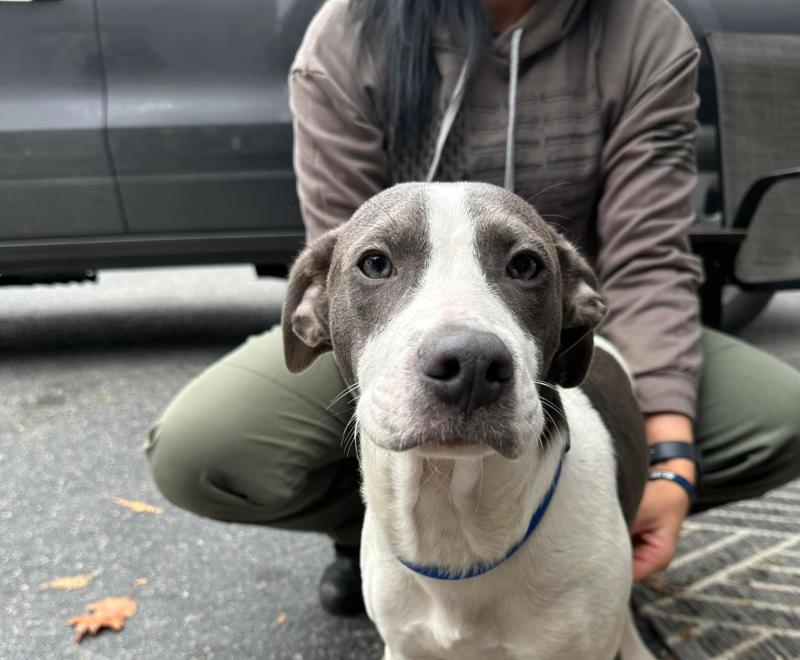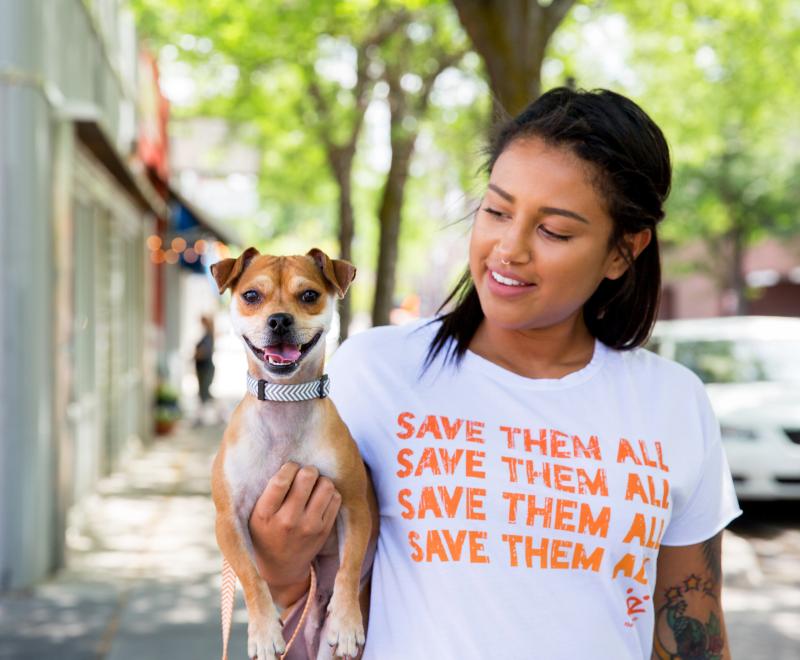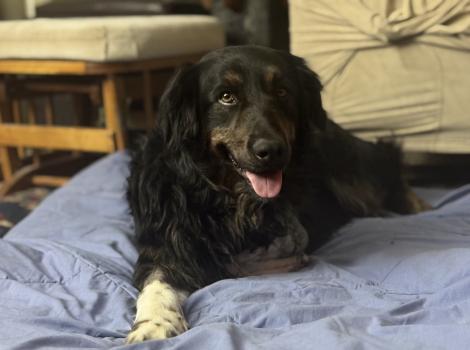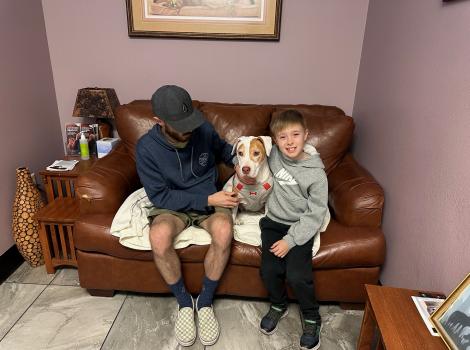Tennessee animal shelter’s rapid turnaround

Three-month-old Pluto was terrified. The little white-and-gray pup — panic filling his sad, bluish eyes — was so afraid of people that he didn’t want anyone near him. And when someone did approach, everything about his body language seemed to say, “Stay away.”
Pluto came to Rhea County Animal Shelter in Evensville, Tennessee, population 2,624, with two other puppies and two adult dogs. “Most of them were adopted fairly quickly,” says shelter director Cheyenne Swafford. “But with Pluto we knew he had a lot to work on, and we were determined to do everything possible to get him into a home.”
More dogs like Pluto are receiving help these days at the Rhea County Animal Shelter, following the shelter’s recent participation in Best Friends’ national shelter embed program, made possible in part by a grant from Maddie’s Fund®. The embed program is one of the ways that Best Friends is helping shelters around the country reach no-kill in 2025.
Last May, the program deployed Best Friends employee Emily Lancione to Tennessee to embed alongside shelter personnel to help raise the shelter’s save rate, expand its community footprint, and set it up for future success. The embed hit all its goals, resulting in the assignment ending three months early. That bodes well for the Rhea County Animal Shelter’s future, which seems brighter than ever.

Receptive to change
“Right from the start, Cheyenne and everyone connected with the shelter were so enthusiastic and willing to take a look at how things could be improved,” says Destiny Haney, Best Friends’ senior manager of national embed programming. “Their save rate, which was at 70% in May, rose steadily, and by November they were above 90% (the threshold for no-kill status). And for the month of February, their save rate was an incredible 100%.”
A combination of many things enabled the shelter to reach a 90% save rate in November, but a major factor was working to get more dogs in homes, which then freed up more space in the shelter. “That enabled us to spend more time, for example, with an animal struggling with a behavior issue and then to advocate more strongly for fostering, rescue, or adoption,” says Emily.
[Helping people care for their pets in difficult times]
Cheyenne, who in addition to being shelter director is a deputy with the Rhea County Sheriff’s Office, says the embed has been a game changer by introducing the importance of fostering, building relationships in the community, and networking with others in animal welfare. This includes working with other organizations to transport animals to shelters in other areas that might have a better chance of placing pets in homes.
“It showed us there’s a whole big world out there,” Cheyenne says. “We would never have thought (on our own) that a rescue group from Iowa would be willing to work with us. But we learned that there are many organizations out there willing to help.”

More community engagement
Emily says connecting with the community was a longstanding challenge at Rhea County. “The shelter is kind of hidden away up here (75 miles southwest of Knoxville),” says Emily. “So we began reaching out to individuals and businesses. We knew there were people out there willing to help, but we learned that they just didn’t know what was needed.”
Part of that engagement included working with a local pizza shop to attach shelter promotional flyers to pizza boxes. And an ice cream shop hosted an adoption event that included free ice cream for humans and pup cones for canines. The shelter also works with the local high school on a program called Pet Publicist, in which students help publicize individual animals for adoption.
The Doggy Day Out program, an idea that Cheyenne picked up from attending the Best Friends National Conference last summer, invites community members to interact with the animals by taking them for walks, outings, and other enrichment.
New position for sustainability
Renee Milner, who serves on the board of directors for the Animal Shelter Alliance of Rhea (a nonprofit organization that raises funds for the shelter), says Best Friends’ commitment to funding a shelter manager position for the next 12 months is a turning point for the organization. The new manager is Cathy Wright, a longtime volunteer who has moved into this new full-time position.
“This puts us in a better position to sustain all of the ideas that Best Friends has brought to us,” Renee says. Cheyenne agrees: “This will enable us to accomplish more — something I can then push to the county commission so they can consider future funding for the position.”
Successful adoption, foster, and transport programs are in place. Some medical protocols have been revamped. Lifesaving events are on the calendar, including a volunteer appreciation day, dog training for community members during the week, and more microchip and vaccine clinics.
[Embracing change saves more pets at Arizona shelter]
“(The embed program) brought us a different kind of focus,” Cheyenne says. “And now we want to continue what we’ve been doing to save more animals and get them into homes.”
Destiny says one of the goals of the embed program is “to leave shelters empowered, with a solid foundation and a renewed strength from knowing what they can accomplish. With strong leadership, some new practices in place, and a head start on future staffing, we’re hopeful that Rhea County can stay the course for no-kill and reach many more milestones in the years ahead."

Pluto epilogue
The little puppy who was so scared in the beginning spent long hours with Emily. Sometimes they worked on training, or sometimes they just sat together in his kennel. “It took a week or so just to gain his trust,” she says. “But then he started improving, continued to make progress, spent some time in foster care, and by the time he was adopted at 5 months old, he was giving kisses to everybody.”
For Cheyenne, sending Pluto home was emblematic of the shelter’s most recent accomplishments, but she hopes it’s also a preview of things to come. “We were able to help a scared little dog, who was able to work through so many things in the time he was with us,” she says. “Seeing him finally get a loving home was such a happy ending.”

Let's make every shelter and every community no-kill by 2025
Our goal at Best Friends is to support all animal shelters in the U.S. in reaching no-kill by 2025. No-kill means saving every dog and cat in a shelter who can be saved, accounting for community safety and good quality of life for pets.
Shelter staff can’t do it alone. Saving animals in shelters is everyone’s responsibility, and it takes support and participation from the community. No-kill is possible when we work together thoughtfully, honestly, and collaboratively.






